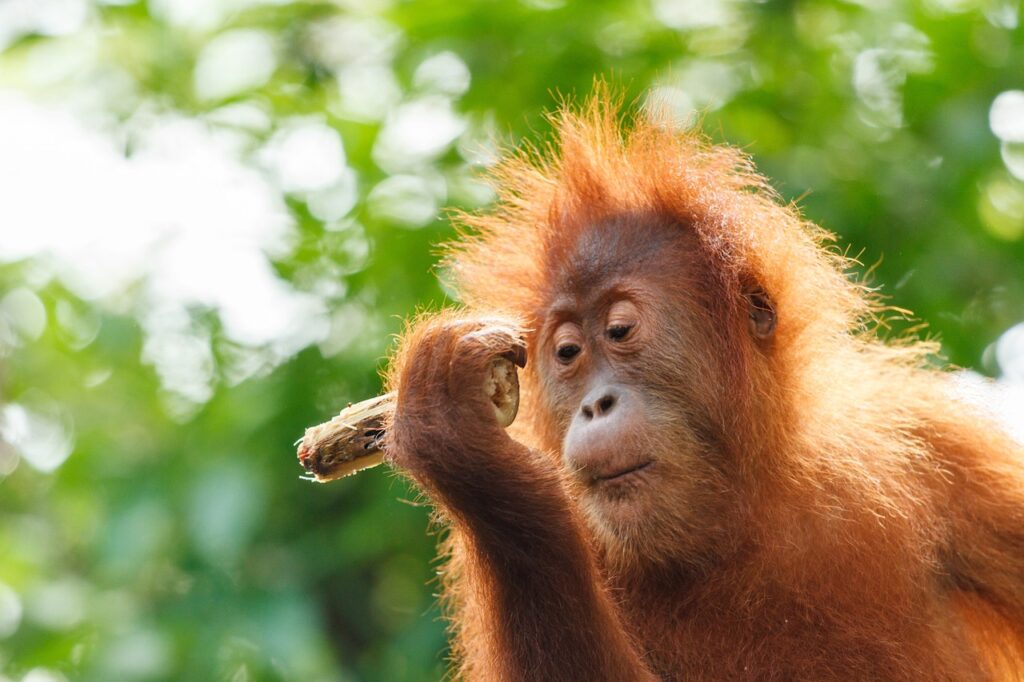Are you ready to dive into the wild and woolly world of the hairiest creatures? Brace yourself for a hairy adventure as we unveil the top 10 hairiest animals.
From the Poitou Donkey with its curly and wavy mane, to the Musk Ox equipped with a thick and shaggy coat, these creatures are truly a sight to behold.
And let’s not forget the Spotted Apatelodes Caterpillar, transforming into a vibrant beauty as it grows. With the Orangutan’s reddish-orange hair covering its entire body and the Norwegian Forest Cat’s hunting prowess, these animals will captivate you.
Get ready to explore the markings, intelligence, and fascinating adaptations of these hairy beasts.
The hairiest animals await your discovery!
Poitou Donkey
If you travel back in time, you’ll find the Poitou Donkey, a large breed with long, curly or wavy hair. The history and cultural significance of the Poitou donkey can be traced back to the Poitou region of France in the 18th century. These donkeys were highly valued for their strength and ability to produce strong and hardworking mules when crossed with horses. They were used extensively in agriculture and transportation during that time.
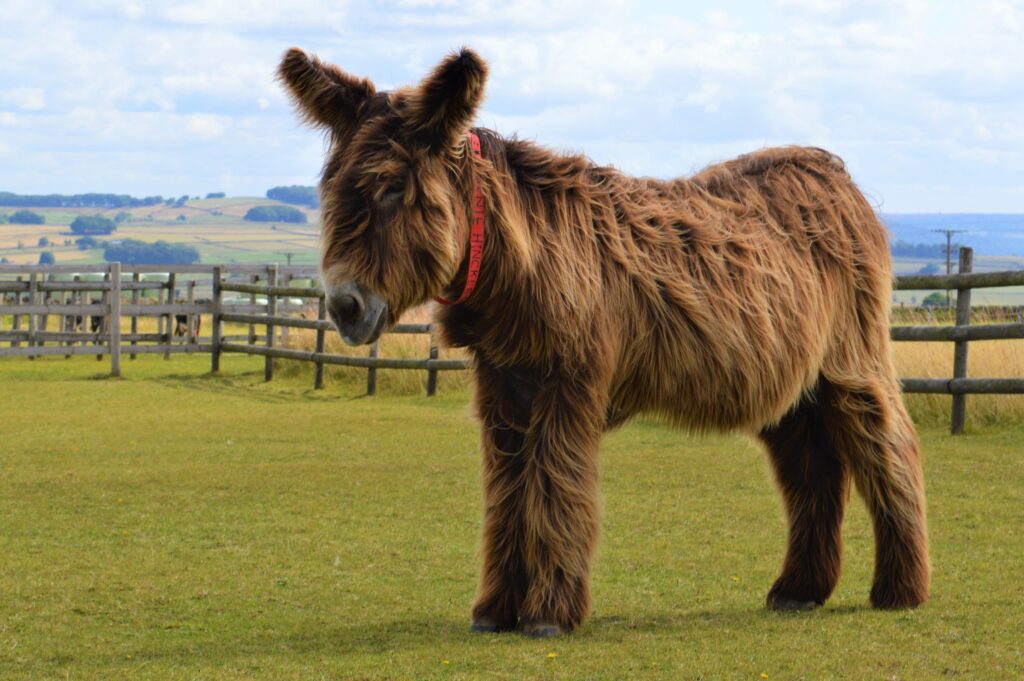
However, with the advent of modern machinery and transportation, the demand for these mules declined, leading to a decrease in the population of Poitou donkeys. Conservation efforts for the breed have been put in place to ensure their survival. Organizations and breeders have focused on preserving and promoting the breed, leading to an increase in their numbers. The Poitou Donkey is now recognized as a rare breed and efforts are being made to protect and conserve their genetic diversity.
Through breeding programs and education, these efforts aim to raise awareness about the importance of preserving this unique breed. In conclusion, the Poitou Donkey, with its long, curly or wavy hair, holds historical and cultural significance. Conservation efforts have been implemented to safeguard the breed and ensure its survival for future generations.
Musk Ox
The Musk Ox, a majestic creature found in the Arctic regions, possesses a remarkable adaptation to protect itself from the harsh weather conditions.
With their thick, shaggy coats, Musk Oxen are well-equipped to withstand freezing temperatures and strong winds.
These coats provide excellent insulation, keeping the animals warm and ensuring their survival in their challenging habitat.
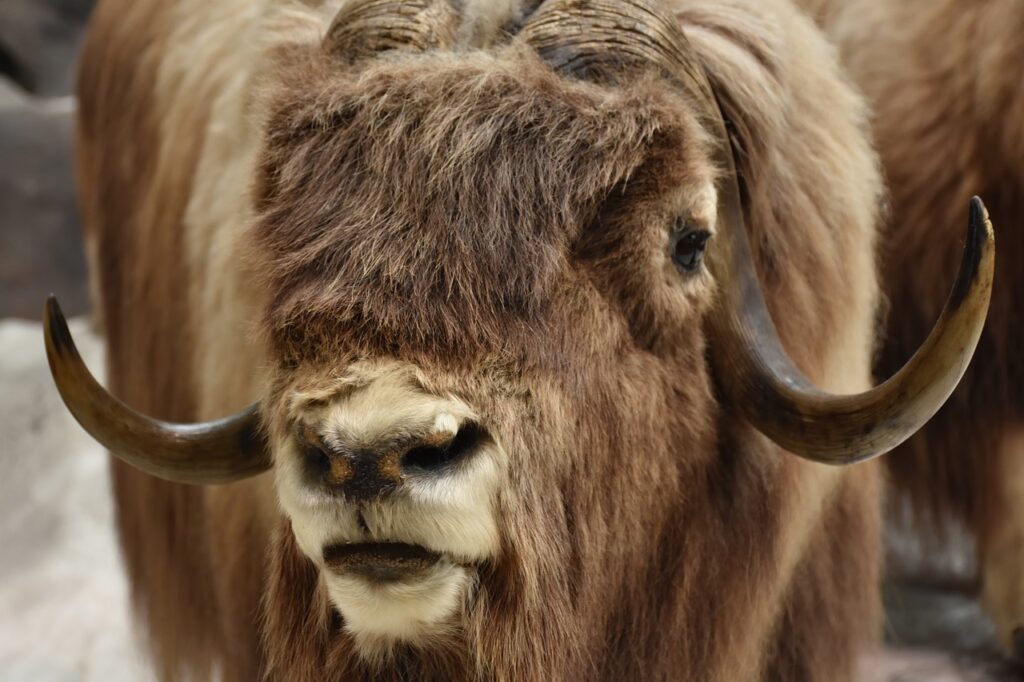
The benefits of the Musk Ox’s coat are numerous. First, the long, shaggy hair provides excellent insulation, trapping a layer of warm air close to the body and preventing heat loss. Second, the hair is also waterproof, keeping the animal dry even in heavy rain or snow. Lastly, the hair acts as a barrier against wind, reducing heat loss through convection.
Hair has played a crucial role in the evolution and survival of animals in harsh climates, enabling them to thrive in environments that would be inhospitable to others.
Spotted Apatelodes Caterpillar
If you come across a caterpillar that changes color as it grows, you may have encountered an interesting creature known as the Spotted Apatelodes Caterpillar. This caterpillar undergoes a unique color transformation, starting off as white and gradually turning into a bright yellow shade. This transformation is quite remarkable and helps the caterpillar camouflage itself in its surroundings.
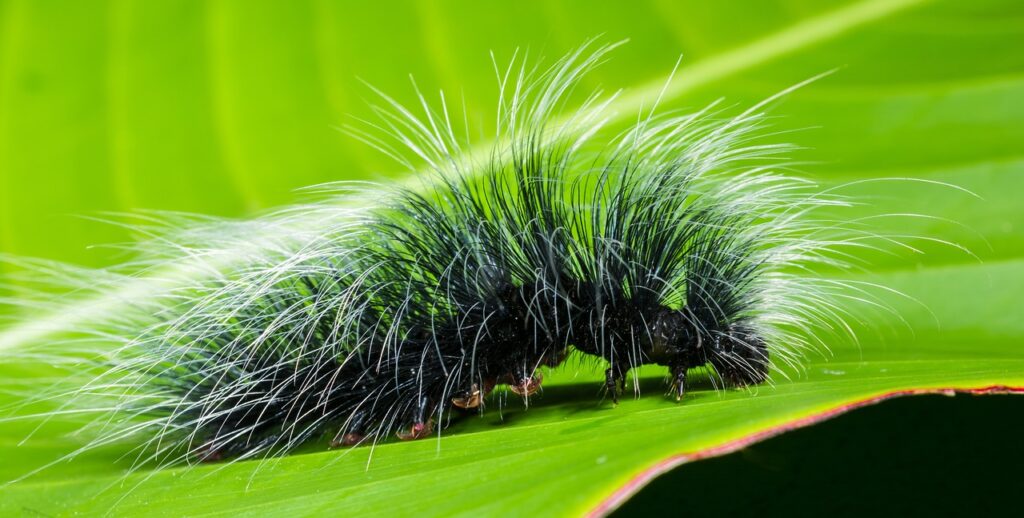
The Spotted Apatelodes Caterpillar can be found in various habitats, including forests, gardens, and meadows. It’s commonly found in North America, particularly in the eastern and central regions. This caterpillar feeds on a variety of plants, including oak, hickory, and maple. It uses its strong jaws to chew through the leaves and stems of these plants, consuming them as its primary source of nutrition.
In terms of appearance, the Spotted Apatelodes Caterpillar is covered in dense, hairy bristles that give it a fuzzy and hairy appearance. These hairs provide protection against predators and also help regulate the caterpillar’s body temperature. When fully grown, the caterpillar transforms into a moth with scalloped lines on its forewings, adding to its unique markings.
Orangutan
Continuing our exploration of the hairiest animals, let’s now turn our attention to the orangutan, an intriguing primate known for its distinctive reddish-orange hair covering its entire body. Orangutans, native to the rainforests of Borneo and Sumatra, possess long, coarse hair that serves various functions, including communication and protection against the elements.
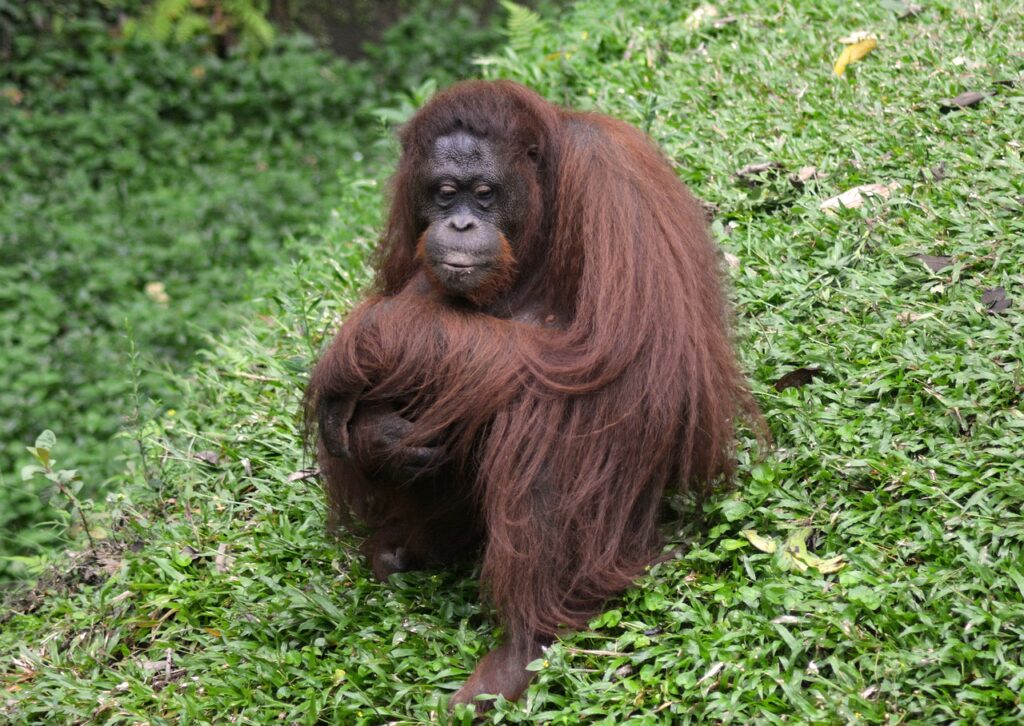
Orangutans use their hair for communication in a couple of ways. Firstly, their hair can be a visual signal to other orangutans, indicating their age, sex, and reproductive status. Males, for example, develop a beard-like growth called a flange that signals their maturity. Additionally, orangutans engage in a behavior known as ‘branch shaking,’ where they vigorously shake tree branches, causing their hair to stand on end. This behavior is believed to be a visual display, signaling aggression or dominance to other orangutans in the vicinity.
Unfortunately, the orangutan population is facing severe threats due to deforestation. As their rainforest habitats are cleared for agriculture and logging, orangutans are losing their homes and food sources. This destruction of their habitat has resulted in a decline in their population, making them critically endangered. The loss of trees also means that orangutans have fewer opportunities to move through the forest canopy, impacting their ability to find mates and maintain genetic diversity.
Angora Rabbit
The Angora Rabbit is known for having the softest fur among all animals. Its fur, called angora wool, is incredibly soft and downy, making it highly sought after for knitting, spinning, and felting.
The Angora Rabbit’s unique fur texture and production of angora wool contribute to its significance in the world of textiles and fashion.
The Angora Rabbit’s fur is highly prized in the textile industry, where it’s used for knitting, spinning, and felting.
Its fur is so soft that it can be compared to the luxurious feel of silk.
Interestingly, orangutans, known for their distinctive reddish-orange hair, have grooming habits similar to the Angora Rabbit. Both species meticulously clean and maintain their fur, ensuring it remains soft and velvety.
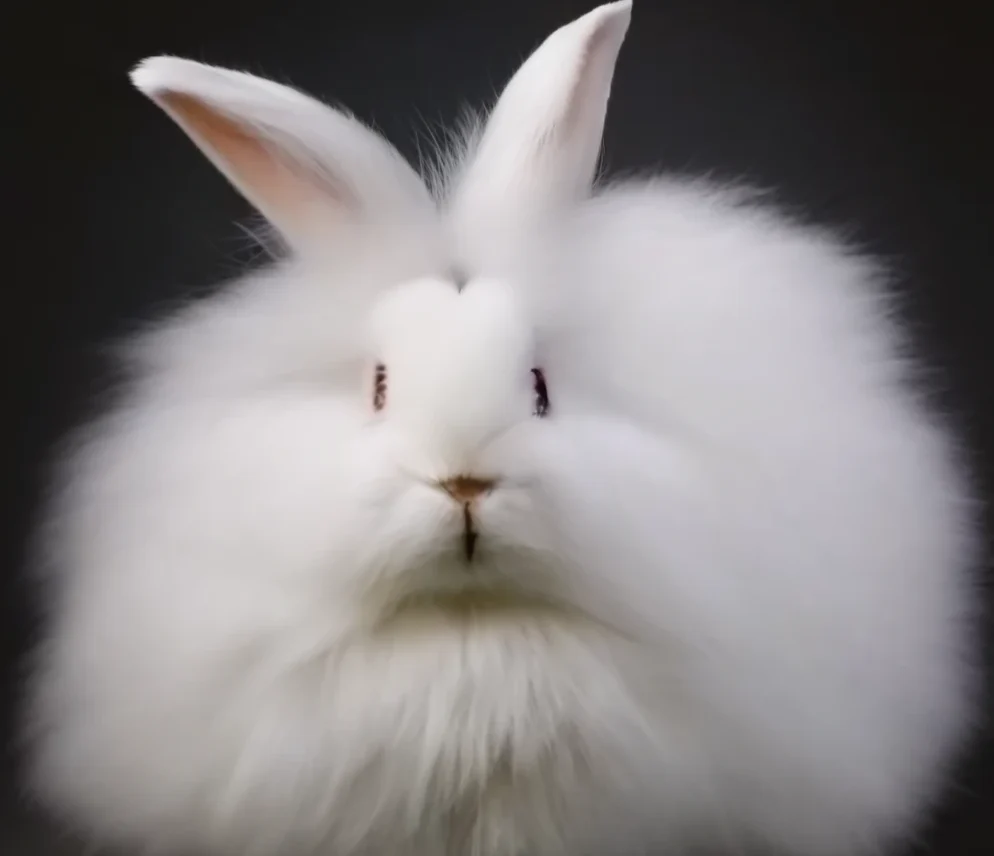
Angora Wool Production
To learn about angora wool production from Angora Rabbits, let’s dive into the process.
Angora rabbits are bred specifically for their long, silky fur known as angora wool. To obtain the wool, the rabbits are carefully groomed to remove loose hair and prevent matting. The fur is then gently plucked or sheared from the rabbit’s body, ensuring minimal discomfort.
Angora wool is highly valued for its softness, warmth, and durability, making it sought after in the textile industry. However, ethical sourcing is crucial in angora wool production. It’s important to ensure that rabbits are treated humanely, with proper care, and their welfare is prioritized.
Responsible angora wool producers prioritize the rabbits’ well-being, providing them with clean living conditions, regular veterinary care, and ample space to exercise. By promoting ethical sourcing practices, the angora wool industry can continue to thrive while upholding animal welfare standards.
Silkie Chicken
A Silkie Chicken is a unique breed of chicken known for its hair-like feathers that feel like silk. These distinctive feathers have earned the Silkie Chicken its name and set it apart from other chicken breeds.
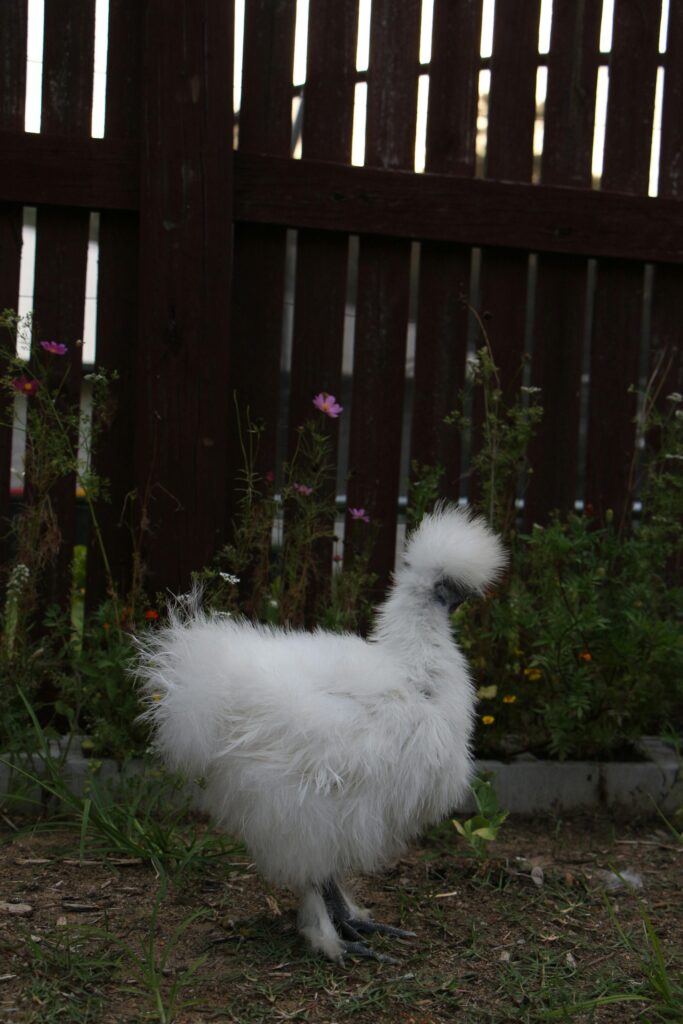
Here are some key aspects to consider about the Silkie Chicken:
- Silk-like feathers: The Silkie Chicken’s feathers have a soft and fluffy texture that resembles silk. They lack the barbs that hold traditional feathers together, giving them a more hair-like appearance. This unique trait makes the Silkie Chicken stand out and adds to its overall charm.
- Unique breed characteristics: Besides their silky feathers, Silkie Chickens have other distinctive characteristics. They have black skin, bones, and even their meat is a dark gray color. Their beaks are short and broad, and they have turquoise or black-colored eyes. They also have five toes instead of the usual four found in most chicken breeds.
- Breeding standards: Silkie Chickens have specific breeding standards that breeders follow to maintain the breed’s unique traits. These standards ensure that the chickens have the desired physical attributes, including correct feather texture, color, and overall body structure.
- Exhibition and showmanship: Silkie Chickens are popular among poultry enthusiasts and are often exhibited in poultry shows. Their unique appearance and silky feathers make them a center of attention in these events. Judges evaluate the chickens based on specific criteria, such as feather quality, color, and overall conformation.
The Silkie Chicken’s silk-like feathers, unique breed characteristics, breeding standards, and exhibition potential make it a fascinating and sought-after breed among poultry enthusiasts.
Yeti Crab
The Yeti Crab, also known as the Kiwa hirsuta, is a unique and intriguing creature found in the deep sea. It’s known for its distinctive appearance, with long, bristly hairs covering its body and claws.
These hairs aren’t just for show, but actually serve as a habitat for bacteria, which the crab feeds on. This adaptation allows the Yeti Crab to thrive in the harsh, cold environments of the deep sea.
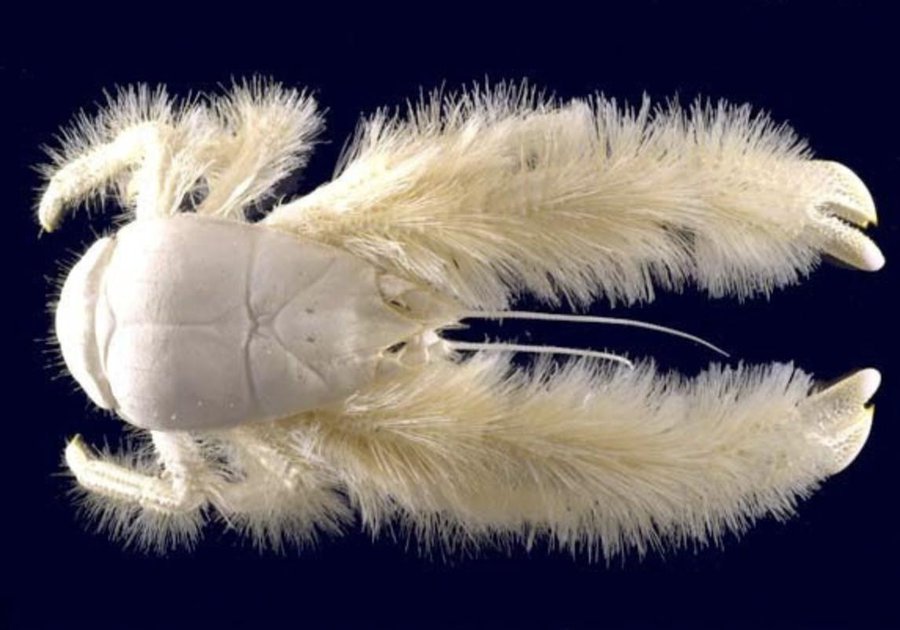
Adaptations of Yeti Crab
Discover the unique adaptations of the Yeti Crab, a crustacean known for its distinctive hairy appearance. The Yeti Crab possesses several remarkable adaptations that allow it to thrive in its deep-sea environment.
- Unique Adaptations:
- Hairy Appearance: The Yeti Crab’s body is covered in long, filamentous hairs, giving it a resemblance to the mythical creature, the Yeti.
- Behavior: The Yeti Crab has developed a unique behavior known as ‘farming’. It cultivates bacteria on its hairy claws, which it then consumes as a food source.
- Role in Ecosystem: The Yeti Crab plays an important role in its ecosystem by scavenging on detritus and dead organisms. Its hairy appendages also provide a habitat for other organisms, promoting biodiversity in deep-sea environments.
These adaptations allow the Yeti Crab to survive in the extreme conditions of the deep sea, showcasing the remarkable adaptability of nature’s creations.
Afghan Hound
Meet the Afghan Hound, a breed known for its long, silky hair and distinctive appearance. This elegant and regal dog is highly sought after for its luxurious coat. To maintain the Afghan Hound’s stunning appearance, grooming techniques are crucial. Regular brushing and combing are necessary to prevent matting and tangles in their long hair.
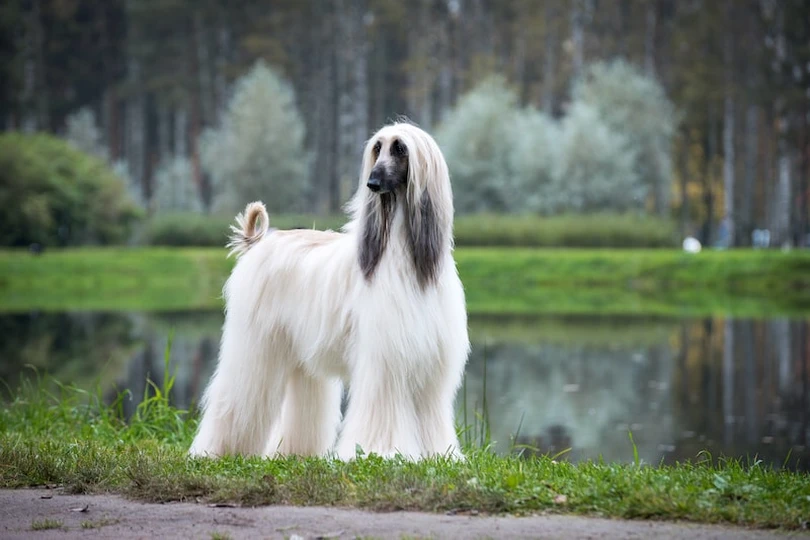
Show competitions for Afghan Hounds often focus on the quality of their grooming, with judges evaluating the dog’s coat, overall cleanliness, and presentation. The grooming process includes bathing, drying, and carefully trimming the hair to accentuate their graceful contours. Show dogs often have their hair styled to perfection, with some even sporting topknots or decorative bows. Achieving the desired look for show competitions requires meticulous attention to detail and a skilled groomer.
The Afghan Hound’s coat can come in a variety of colors, including black, cream, and red. Their facial hair may resemble a mustache or have a black facial mask, adding to their unique appearance. With their striking hair and regal stature, Afghan Hounds are truly a sight to behold in the world of dog breeds.
Sea Otter
The Sea Otter, another incredibly hairy animal, is known for its dense, waterproof fur. This adaptation allows them to stay warm in the cold waters they inhabit. Sea otters have a unique behavior of using tools for feeding. They often use rocks to crack open hard-shelled prey, such as clams, abalone, and sea urchins. This tool use is a remarkable display of intelligence and problem-solving skills.
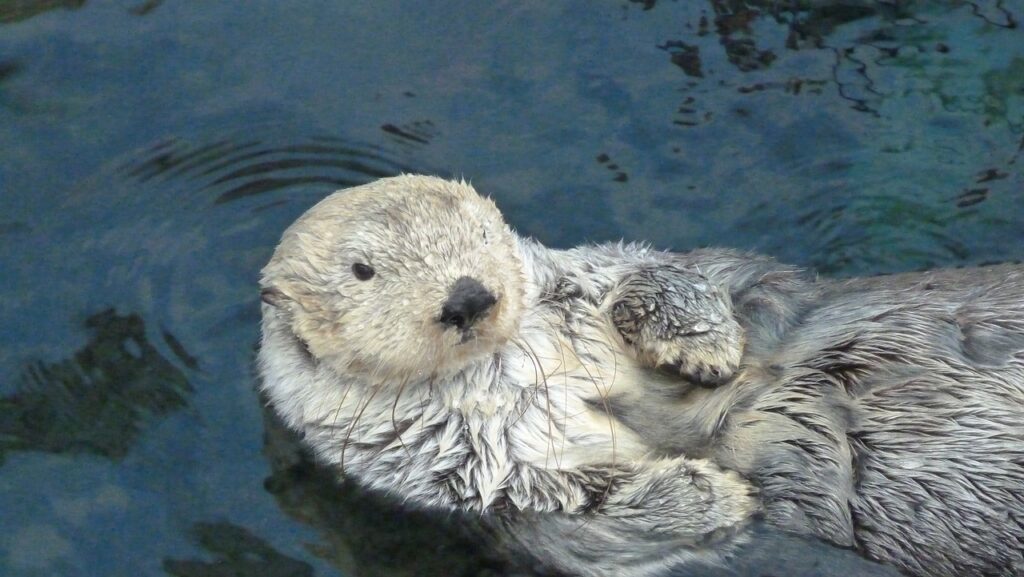
Norwegian Forest Cat
The intelligence and friendly nature of the Norwegian Forest Cat make it a popular choice as a pet for families who appreciate its unique hairy appearance. This breed is known for its exceptional hunting abilities, which stem from its origins as working cats on farms.
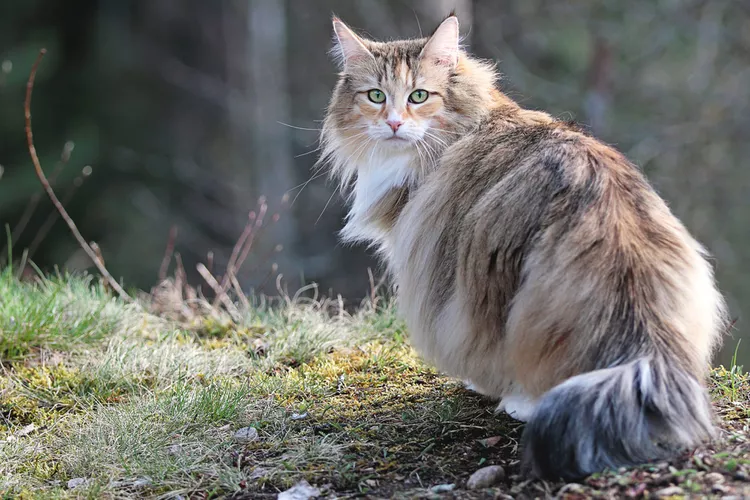
Here are three key points about the Norwegian Forest Cat:
- Hunting Abilities:
The Norwegian Forest Cat possesses natural hunting instincts that have been honed over centuries. With their strong and agile bodies, these cats excel at stalking and capturing prey. Their sharp claws and keen senses enable them to pounce on unsuspecting targets with precision and speed. Whether it’s chasing after mice or birds, the Norwegian Forest Cat’s hunting skills are both impressive and efficient.
- Friendly Nature:
Despite their hunting prowess, Norwegian Forest Cats are also renowned for their friendly and sociable nature. They have a natural affinity for human companionship and enjoy being part of a family. These cats thrive in environments where they receive love, attention, and plenty of playtime. Their friendly disposition makes them ideal pets for families with children or other animals, as they’re generally tolerant and adaptable.
- Unique Hairy Appearance:
One can’t discuss the Norwegian Forest Cat without acknowledging its distinct hairy appearance. Their thick, double-layered coat is designed to withstand harsh climates, with a water-resistant outer layer and a dense undercoat for warmth. This luxurious fur comes in various colors and patterns, adding to the breed’s aesthetic appeal. Regular grooming is necessary to maintain the coat’s health and prevent matting.

Erzsebet Frey (Eli Frey) is an ecologist and online entrepreneur with a Master of Science in Ecology from the University of Belgrade. Originally from Serbia, she has lived in Sri Lanka since 2017. Eli has worked internationally in countries like Oman, Brazil, Germany, and Sri Lanka. In 2018, she expanded into SEO and blogging, completing courses from UC Davis and Edinburgh. Eli has founded multiple websites focused on biology, ecology, environmental science, sustainable and simple living, and outdoor activities. She enjoys creating nature and simple living videos on YouTube and participates in speleology, diving, and hiking.
- WILDLIFE THEMED T-SHIRTS
Cute Hedgehog Embroidered: Love Wildlife, Protect Nature Wildlife conservation tees
$35.00

